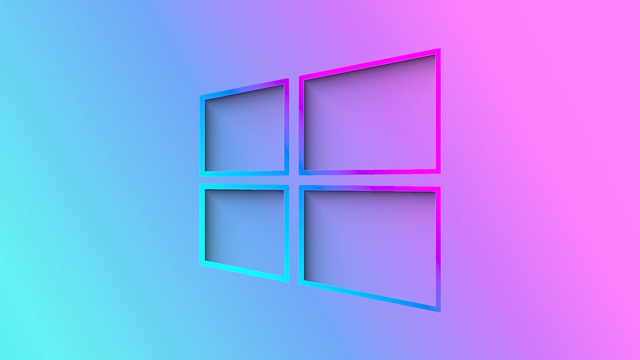Introduction
Did you know that Windows Server 2022 offers enhanced security features and increased performance, making it an ideal operating system for businesses and organizations managing their IT infrastructure? According to data from NetMarketShare, Windows Server holds a global market share of 70.22% as of February 2023, making it one of the most widely used server operating systems worldwide. In this article, we will discuss the key features, system requirements, and benefits of Windows Server 2022, as well as what’s new in the latest version.
What is Windows Server 2022?
Windows Server 2022 is a server operating system developed by Microsoft that is designed for use on enterprise-level servers. It provides a wide range of features and capabilities that help businesses and organizations manage their IT infrastructure effectively.
Features: What’s New in Windows Server 2022
Windows Server 2022 has been released with several new and improved features. This section will discuss the most significant changes that come with the latest version of Windows Server.
A. Security Improvements
Security is a crucial aspect of any server system, and Windows Server 2022 introduces several new security features to help protect against potential threats. Some of the notable security improvements in Windows Server 2022 include:
- Secured-core server – This feature helps to protect the server system against firmware-level attacks by ensuring that only trusted software and drivers can run.
- Microsoft Defender for Identity – This feature provides enhanced threat detection and response capabilities to help detect and mitigate security risks.
- Azure Arc-enabled servers – Windows Server 2022 can now be connected to Azure Arc, which allows for centralized security management and improved security monitoring.
B. Hybrid Capabilities
Windows Server 2022 has several hybrid capabilities that enable organizations to bridge the gap between on-premises and cloud environments. These hybrid capabilities include:
- Azure Arc-enabled servers – This feature allows centralized management and monitoring of servers on-premises and in the cloud.
- Azure Automanage – This feature helps to automate the configuration and management of virtual machines running on-premises or in the cloud.
- Azure Kubernetes Service (AKS) on-premises – This feature allows for deploying and managing Kubernetes clusters on-premises, providing a seamless hybrid cloud experience.
C. Application Platform Enhancements
Windows Server 2022 also includes several application platform enhancements that improve performance and scalability for modern applications. These enhancements include:
- Support for HTTP/3 – This protocol improves web application performance and reliability.
- Improved container support – Windows Server 2022 includes container orchestration and management improvements, making it easier to deploy and manage containerized applications.
- GPU acceleration – Windows Server 2022 now supports GPU acceleration, which can significantly improve the performance of AI and machine learning workloads.
D. Management Enhancements
Windows Server 2022 introduces several management enhancements that help simplify server management and reduce administrative overhead. Some of the notable management enhancements include:
- Windows Admin Center – This web-based management tool provides a centralized interface for managing Windows Server 2022 and other Windows Server versions.
- PowerShell 7 – This version of PowerShell includes several new features and improvements, making it easier to automate server management tasks.
- Cloud-native management – Windows Server 2022 is designed to work seamlessly with cloud-native management tools, allowing for easy integration with cloud-based management platforms.
E. Other New Features
Aside from the features mentioned above, Windows Server 2022 also includes several other new features, such as:
- Support for SMB compression – This feature can significantly reduce network bandwidth usage for file transfers.
- Improved support for containers and microservices – Windows Server 2022 includes several improvements that make deploying and managing containerized applications and microservices easier.
- Support for nested virtualization – This feature allows for the creation of virtual machines within virtual machines, making it easier to test and develop applications in isolated environments.
In summary, Windows Server 2022 has several new and improved features that enhance security, improve hybrid capabilities, and simplify server management. These new features make Windows Server 2022 a compelling option for organizations looking for a modern server system that can meet the demands of today’s applications and workloads.
Windows Server 2022 System Requirements
Before installing Windows Server 2022, ensuring that your system meets the minimum requirements is important. This section will discuss the hardware, software, and network requirements for Windows Server 2022.
A. Hardware requirements:
The hardware requirements for Windows Server 2022 are as follows:
- Processor: 1.4 GHz 64-bit processor or faster
- RAM: 2 GB or more
- Hard disk space: 32 GB or more
- Network adapter: Ethernet adapter with at least 1 Gbps throughput
- Optical drive: DVD-ROM drive (if installed from DVD media)
You may need more powerful hardware to ensure optimal performance, depending on your specific needs.
B. Software requirements:
In addition to the hardware requirements, there are also software requirements that must be met in order to install and run Windows Server 2022. These include:
- Operating system: Windows Server 2022 can be installed on systems running Windows Server 2012 R2, Windows Server 2016, or Windows Server 2019.
- .NET Framework: Version 4.8 or later of the .NET Framework must be installed.
C. Network requirements:
Windows Server 2022 requires a network connection to function properly. The network requirements for Windows Server 2022 are as follows:
- Network adapter: An Ethernet adapter with at least 1 Gbps throughput is required.
- IPv6: Windows Server 2022 supports IPv6, and it is recommended that you enable IPv6 on your network.
- Domain Name System (DNS): Windows Server 2022 requires DNS to function properly. You should ensure that DNS is properly configured on your network before installing Windows Server 2022.
You can ensure a smooth installation and optimal performance by ensuring your system meets the minimum hardware, software, and network requirements for Windows Server 2022. The following section will discuss what is new in Windows Server 2022.
Windows Server Azure Edition
What is Windows Server Azure Edition?
Windows Server Azure Edition is built on top of the same codebase as the standard Windows Server but with several enhancements that are specifically designed for cloud environments. These enhancements include:
- Optimized for Azure – Windows Server Azure Edition is optimized for use with Microsoft Azure, providing a seamless experience for organizations that are already using Azure for their cloud-based workloads.
- Built-in security – Windows Server Azure Edition includes several built-in security features that help protect against potential threats, including Azure Security Center and Azure Firewall.
- Hybrid capabilities – Windows Server Azure Edition includes several hybrid capabilities, such as Azure Arc and Azure Automanage, that enable organizations to integrate their on-premises and cloud environments seamlessly.
Benefits of Windows Server Azure Edition
There are several benefits to using Windows Server Azure Edition for cloud-based workloads, including:
- Cost savings – By running Windows Server in the cloud using Azure, organizations can save on hardware and maintenance costs while also taking advantage of the pay-as-you-go pricing model.
- Scalability – Azure provides virtually unlimited scalability, allowing organizations to easily scale up or down their server resources as needed to meet demand.
- High availability – Azure provides high availability and disaster recovery capabilities that help ensure that workloads are always available, even in the event of a server failure.
- Flexibility – Windows Server Azure Edition provides the flexibility to run a wide range of applications and workloads in the cloud, from web applications to virtual desktops and more.
Final Thoughts
In conclusion, Windows Server 2022 is an impressive new operating system that offers a wide range of benefits to businesses of all sizes. Whether you want to improve your security, performance, or productivity, this new OS has something for everyone. With its advanced features and capabilities, Windows Server 2022 is sure to be a game-changer in the world of server technology. So, what are you waiting for? Upgrade to Windows Server 2022 today and experience the benefits for yourself!







